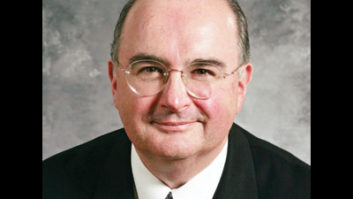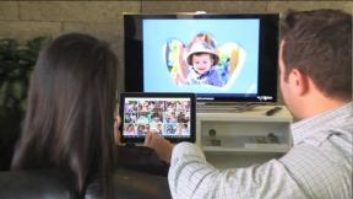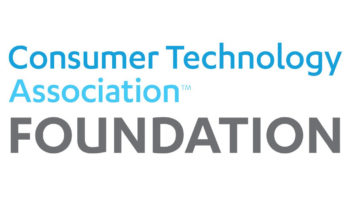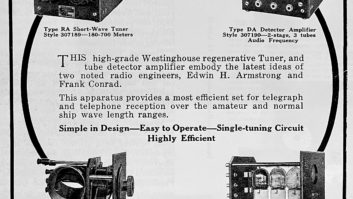If you remember the byline above, you’ve been in the industry for more years than you might care to remember.
So it came as sad news on Friday, when many of us were packing to leave for International CES the next day, to hear that Manning Greenberg, who covered the industry from the early 1950s to the mid-1990s, mostly with Home Furnishings Daily (HFD), had died. The sad day was in April 2006. Boy, did we miss that story. That’s something that Greenberg, the old news hound that he was, would have been angry about.
We got word from Lois Whitman of HWH Enterprises in an email. Lois was able to track down a family member. HWH is a leading New York-based public-relations firm that has represented several CE manufacturers over the years. She got her start working for Manny as a reporter in the 1970s at HFD. I worked with him at HFD from the late ’80s to the early ’90s, and we both lost touch with him in the last couple of years and felt guilty about it.
In fact, TWICE editors Amy Gilroy, Doug Olenick, Joe Palenchar and Greg Tarr all either worked for or with Manny at some point during the 1980s and 1990s. When he left HFD in the 1990s he even freelanced a couple of stories for TWICE.
For those of you who never knew Manny, let me put his stature in the business in perspective. When I attended my first CES in 1981, the four top editors covering the industry were David Lachenbruch, who started at Television Digest right after World War II; Art Levis, who worked with Lachenbruch and is best-known for his work at the old Consumer Electronics monthly magazine; our own Bob Gerson, founding editor of TWICE and long-time TV Digest reporter; and Greenberg.
Greenberg worked at Home Furnishings Daily’s TV & Appliances section, first on the copy desk, later as a reporter, section editor, then editor of a monthly spin-off magazine from the 1980s called Electronics Retailing, and later on at HFD when the then-Fairchild property became a weekly.
For much of his career he was on daily deadlines, not for the Web or e-newsletters, but for a print newspaper. The print editors had to fill pages with scoops back then, not just content for the Web “because it was a slow news day.”
While Greenberg could rely on the legendary Fairchild News Service, the company’s network of bureaus across the country that you could assign stories to, he loved it when his staff in New York would come up with a scoop. He thrived on competition. During the early days — when he worked alongside Henry Brief, who made his name at the old ITA, when Lois worked with him later on, and when I worked with him in the ’80s and ’90s — breaking a story and reporting it first and accurately was everything. The hell with deadlines, polite niceties, etc. — the story was the key.
While the other three reporting legends I mentioned may have had the same news drive, or eventually learned more about how CE products worked, or knew how to cultivate news sources in a more diplomatic way, Greenberg was voracious. And I could see where he could be physically intimidating — he was a big guy, around 6-foot-1 with long arms and a deep, menacing voice when pissed off — but he could also be rather quiet and generous, and sometimes a real softy.
Unlike some senior editors or reporters I’ve seen and heard about over the years, Greenberg was generous with his expertise and his sources. Thanks to Manny I met Joe Clayton, Jack Luskin, Harry Elias, Saul Gold, Jerry McCarthy and Ralph Wolfe, to name a few, when I first joined HFD in the mid-1980s. I came from the video game business and had no CE sources. He shared and said, “Just tell [fill in the blank] that you work with me.”
Industry execs answered my calls when I said “Manny Greenberg” as if I used the magic words. And I can honestly say I learned more about the arcane world of electronics/appliance retailing than anyone else I’ve ever worked with.
By the time I got to work with Manny he was senior editor of HFD. He had just come back to the paper full time after editing a successful monthly magazine for Fairchild called Electronics Retailing. It was so successful Fairchild closed it down and brought Manny back to write for the HFD Electronics section because the industry decided to advertise in the monthly rather than the section. (Publishing logic … go figure.)
Jeff Malester, another HFD/TWICE alum, was editor of the section. During his stint as editor of Electronics Retailing, Manny’s wife died of cancer and those who knew him before and after that said her passing changed him. He still loved the news, but picked his spots to get hyper about covering the business.
I was on the paper for a few months when news broke overnight that GE was going to buy RCA. The next morning Malester was there at the crack of dawn. I knew this was big so I got in around the same time, and Greenberg, whose arrival hours varied, was already there checking notes, and the three of us sat down to see who we should call for reaction, who should go to the press conference to hear what GE’s Jack Welch was going to say (Manny and I both went), and the like. By the end of the day we pounded out two main stories, a sidebar or three and charts about the history of both companies.
One of Manny’s stories in the late ’80s lead me to speak to Gary Shapiro, via telephone, for the first time. Manny got Howard Ladd and another exec over at Sanyo Fisher to say that the industry needed only one CES a year, not two. If you remember, there was the Winter CES in January and the Summer CES in Chicago. Needless to say, Gary, who was then the chief legal counsel for CEA’s precursor, the EIA/Consumer Electronics Group, wanted to give the association’s view of Ladd’s opinion.
Manny pushed HFD to spend the extra T&E to send more reporters than anyone to the NATM Buying Group meetings. I went with him my first spring at HFD and in the next year or two we must have had four reporters there hounding Saul, NATM’s members and his suppliers. And P.S., it was Manny’s idea years ago to do the “Focus 200,” the first ranking of CE retailers based on annual volume. (Others, including TWICE, followed with their own rankings. I don’t know whether to praise or damn him for that.)
Did I mention that Manny was a bit of an eccentric? For instance, he loved classical music especially Beethoven. Nothing strange there, but Manny once ripped into a salesperson at HFD who mentioned how great a singer Bing Crosby was. Manny exploded, saying that Crosby, the music of the ’30s, Elvis and Sinatra, among others, had destroyed the Western musical tradition.
He also told the story about the time HFD sent him, by train, to some line show in New Orleans. Either Manny couldn’t get a flight, or it was during the period when he was afraid to fly (Bob Gerson can tell one of those stories). In the ’50s and part of the ’60s HFD gave reporters meal money on the road like old-time ballplayers. It may have only been $25 or so a day, but Manny had a young family and decided to pocket the meal money and pack his own food for his trip to the Big Easy.
He bought a long loaf of Italian bread, a long Italian salami and a Swiss army knife to cut the delicacies. He didn’t even buy drinks on the train. He just drank from the train’s water cooler. As the train left Penn Station in New York for the day-and-a-half journey he took out his Italian bread, salami and Swiss knife and made a sandwich. Then he got water from the cooler. The sandwich tasted great, as he would tell the story, even better because he was pocketing the meal money. Lunch time arrived and he took out the bread, salami and knife, and got water. Manny did the same thing for dinner that night.
By breakfast the next morning he looked at the half-eaten loaf of bread and the remaining salami. He got up, went to the back of the last car, threw both parcels off the train and went back to get a real breakfast … and never ate a salami sandwich again.
Speaking of food, when I began to edit HFD’s Electronics section I could always tell when Manny went to a lunch press event whether or not there was news. Our set routine was, “Manny, how did it go?” If he began to say, “Well, lunch started with a little lobster bisque,” or something like that, I knew he didn’t think much of the story.
And finally, while Manny knew just about everything one could know about the CE business in his era … he couldn’t operate electronics. He was the absolute last person on HFD to use a computer. Malester, the copy desk or sometimes yours truly would enter his typewriter-written stories into the mainframe system. Finally in the early ’90s he made the switch. He even bought a Tandy MS-DOS laptop, the same as Greg Tarr and I. Luckily, Greg also lived in Connecticut, so instead of calling me in Brooklyn about his laptop problems, Greg became his IT person.
I got on his good side early on when we both went to a manufacturer’s press conference. When we got back Greenberg bellowed, “Why do they invite so many of these reporters who ask inane questions just to hear their own voices?” I said, “I don’t get it. You ask a good question in front of everyone and you can give away your story.” He laughed and yelled, “Exactly! That’s why I won’t do it!” Then he smiled, “I knew there was something about you I liked.”
I can speak for myself and the many reporters, manufacturers, retailers and other assorted industry types to say that there was plenty to like and respect about that guy. For those of you at CES this week who knew Manny, I suggest you raise a glass to this legendary reporter.








